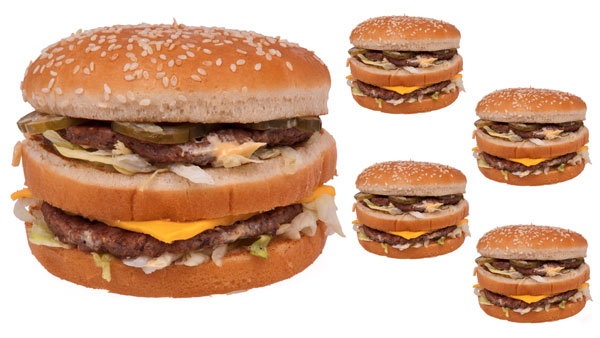14 Food Waste Facts That Will Make You Want to Change the World

By 2050, the average Earthling will be consuming 3,070 calories a day, yet the average person requires only 2,000 calories. Keeping this steady path to overconsumption in mind, while nearly a billion people around the world go hungry, we waste one third of the food produced globally.
So, why the disparity between food production and consumption in developed versus developing countries?
According to the CGIAR Research Program on Climate Change, Agriculture and Food Security (CCAFS), high-income countries tend to waste food at the consumer and retail level, like when we toss out a half-eaten burger or a grocery store unnecessarily throws out “expired” food. On the other hand, developing regions see food lost on the production level due to spoilage, a lack of modern transport and harvesting limitations.
Luckily, food waste is one of the planet’s easier dilemmas to solve. While challenging, the solution will be more about changing people’s mindsets than creating over-complicated, high-tech answers. The first step? Understanding where food waste happens and how we can change the world by changing the way we eat.
So, let’s take the first step:
_____
The world’s average calorie consumption is rising, in 2050 we’ll be eating 3,070 calories a day


—————-
3,070 Calories = Over 5 Big Macs a day…

Or over 20 cans of Pepsi a day.

—————–
Yet while 1.4 billion adults are overweight…
…842 million people are undernourished
—————–
So, what’s happening?
A lot of it has to do with food waste. Think about it:
Both high-income and developing countries waste 1/3 of the food produced.
—————–
Food waste in high income countries happens at the consumer level, like what you leave on the dinner table.
—————–
Food waste in developing countries happens at the post-harvest & processing stages:
Lack of modern transport, storage infrastructure and financial, managerial and technical limitations contribute to these losses.
—————–
Over 90% of agriculture in sub-Saharan Africa is rain-fed… imagi
——————-
The total amount of food waste in industrialized countries as high as the total net food produced by sub-Saharan Africa.
—————–
Just think: Eliminating avoidable food waste in the USA would save 55 million metric tonnes of food per year…
…the equivelant of 440,000,000,000 Taco Bell Crunchy Taco Supremes.

—————–
…but understanding these facts are the first steps in making a difference.
—————–
Climate change has adverse affects on crop production, but research shows these affects can be mitigated.
—————–
If women had the same access to productive resources as men they could increase yields on their farms by 2030%.
Researchers note that by getting farmers new and improved drought resistant seeds, or more fertilizer, yields could rise, resulting in more food for everyone.
—————–
Continuing the push of open agricultural data awareness so that those with power, skills and resources can make adjustments for those who can’t
—————–
…this data and knowledge is getting more readily available, case-in-point, this pretty mini site on climate change, agriculture and food security
Because at the end of the day…
Data courtesy CGIAR’s Big Facts 2014 site












































